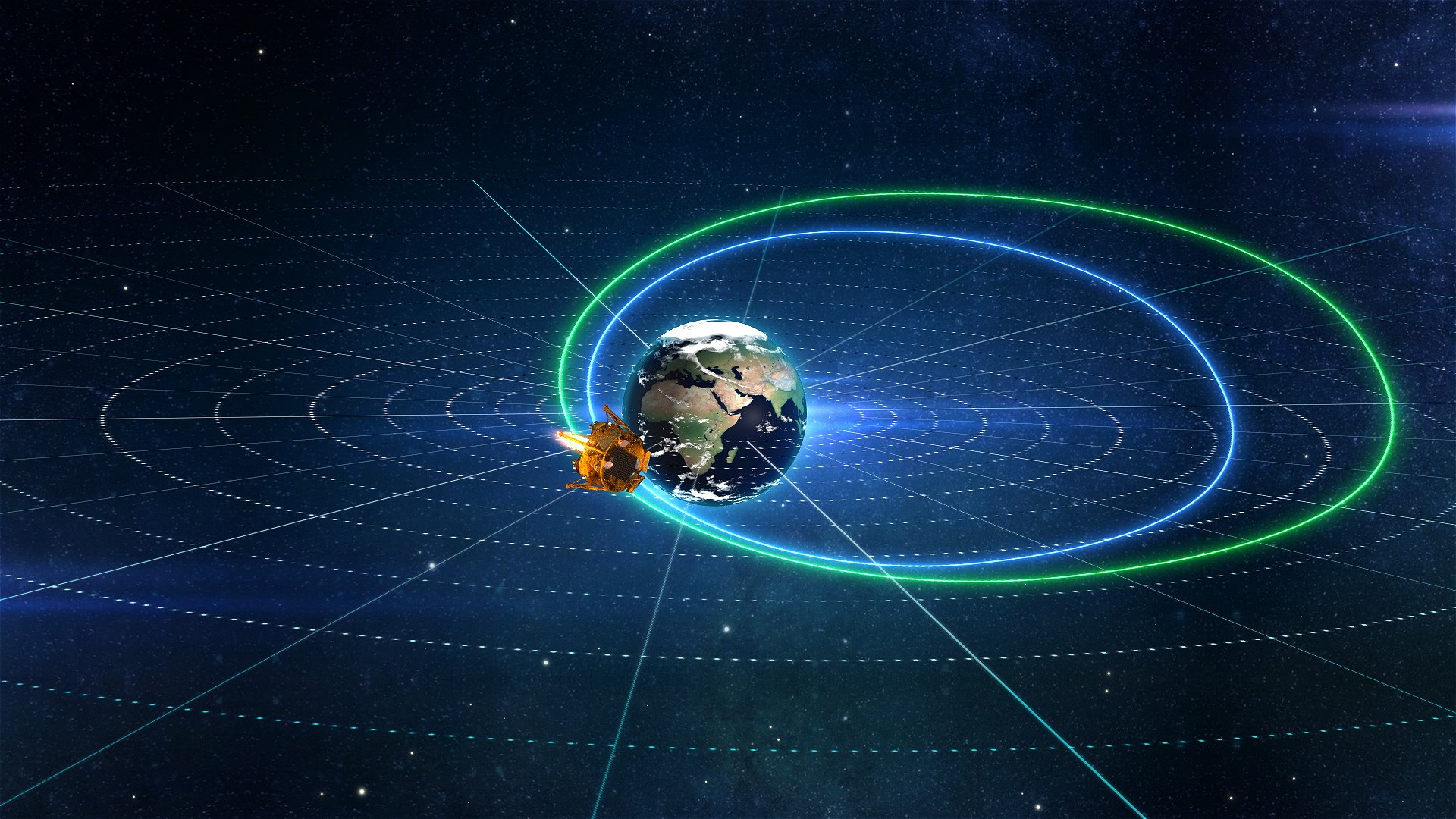
Israel's first lunar lander appears to be back on track.
The 5-foot-tall (1.5 meters) spacecraft, known as Beresheet, missed a planned engine firing Monday (Feb. 25) after its onboard computer reset unexpectedly. But the mission team managed to troubleshoot the issue, and the lander performed the maneuver today (Feb. 28).
"After completing examination of the computer resets and implementation of corrective measures, Beresheet conducted a successful maneuver today at 9:30 p.m. Israel time [2:30 p.m. EST, 1930 GMT]," mission team members said in an emailed statement.
Related: Israel's 1st Moon Lander Beresheet in Pictures
"The spacecraft is on its way to an elliptical orbit, where the farthest point from Earth is at a distance of 131,000 kilometers [81,400 miles]," they added. "The maneuver was executed as planned, and Beresheet's main engine was activated for 4 minutes. The next maneuver is planned in another week."
Beresheet, a joint project of the nonprofit group SpaceIL and the company Israel Aerospace Industries, launched to Earth orbit on Feb. 21 atop a SpaceX Falcon 9 rocket. The lander has now performed two in-space maneuvers, which are designed to raise Beresheet's orbit, pushing the craft closer and closer to the moon.
If all goes according to plan, Beresheet — whose name means "in the beginning" in Hebrew — will be captured into lunar orbit on April 4 and touch down on the moon's surface on April 11. A successful landing would be momentous, marking the first time a privately funded team, or any team based in Israel, had pulled off the feat. To date, only the Soviet Union, the United States and China have soft-landed craft on the lunar surface.
Get the Space.com Newsletter
Breaking space news, the latest updates on rocket launches, skywatching events and more!
Beresheet is also striking a blow for low-cost space exploration. The mission's total price, including launch, is about $100 million, team members have said.
SpaceIL began as a competitor in the Google Lunar X Prize (GLXP), a now-defunct $30 million challenge that asked privately funded groups to land a robot on the moon, move it 1,640 feet (500 m) and beam home high-resolution imagery.
Beresheet was therefore originally designed to be mobile, but the lander's handlers don't plan to move it around on the lunar surface; doing so would introduce unnecessary risk, they have said.
Beresheet's surface mission is designed to last two Earth days. The lander will measure local magnetic fields and do a bit of other science work, but its main objectives are to help push Israel's spaceflight program forward and to inspire kids, especially in Israel, to get excited about science, technology, engineering and math.
The lander carries, among other things, an Israeli flag and a time capsule that holds a "lunar library" devised by the Arch Mission Foundation. The main goal of this latter organization is to safeguard human knowledge for millions or billions of years by storing digital "libraries" in off-Earth locales. Beresheet's contains the entirety of the English-language version of Wikipedia and other materials.
The computer reset wasn't the first hiccup Beresheet experienced during its long journey to the moon. Shortly after launch, the mission team noticed that the lander's star trackers, which are critical to navigation, are highly sensitive to blinding by solar radiation. But Beresheet has battled through that issue, successfully performing two engine firings.
Mike Wall's book about the search for alien life, "Out There" (Grand Central Publishing, 2018; illustrated by Karl Tate), is out now. Follow him on Twitter @michaeldwall. Follow us on Twitter @Spacedotcom or Facebook.
Join our Space Forums to keep talking space on the latest missions, night sky and more! And if you have a news tip, correction or comment, let us know at: community@space.com.

Michael Wall is a Senior Space Writer with Space.com and joined the team in 2010. He primarily covers exoplanets, spaceflight and military space, but has been known to dabble in the space art beat. His book about the search for alien life, "Out There," was published on Nov. 13, 2018. Before becoming a science writer, Michael worked as a herpetologist and wildlife biologist. He has a Ph.D. in evolutionary biology from the University of Sydney, Australia, a bachelor's degree from the University of Arizona, and a graduate certificate in science writing from the University of California, Santa Cruz. To find out what his latest project is, you can follow Michael on Twitter.









